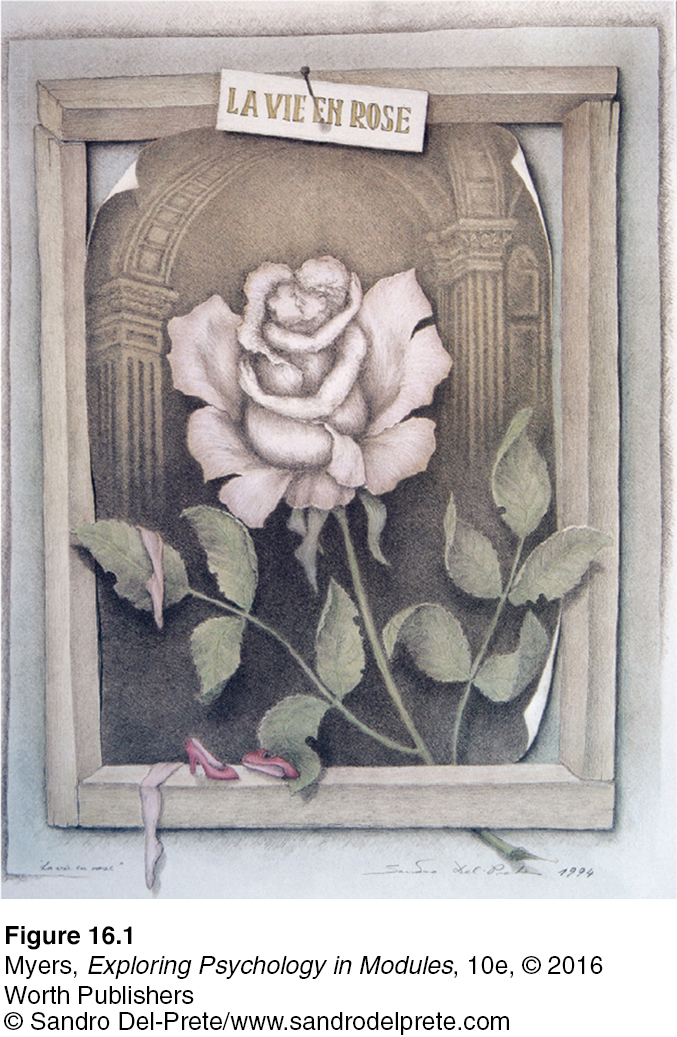16.1 Processing Sensation and Perception

16-
sensation the process by which our sensory receptors and nervous system receive and represent stimulus energies from our environment.
perception the process of organizing and interpreting sensory information, enabling us to recognize meaningful objects and events.
Heather Sellers’ curious mix of “perfect vision” and face blindness illustrates the distinction between sensation and perception. When she looks at a friend, her sensation is normal: Her sensory receptors detect the same information yours would, and her nervous system transmits that information to her brain. Her perception—the processes by which her brain organizes and interprets sensory input—
In our everyday experiences, sensation and perception blend into one continuous process.
bottom-up processing analysis that begins with the sensory receptors and works up to the brain’s integration of sensory information.
top-down processing information processing guided by higher-
Our bottom-up processing starts at the sensory receptors, which receive sensory input, and works up to higher levels of processing.
Our top-down processing creates meaning from this sensory input by drawing on our experience and expectations.
As our brain absorbs the information in FIGURE 16.1, bottom-